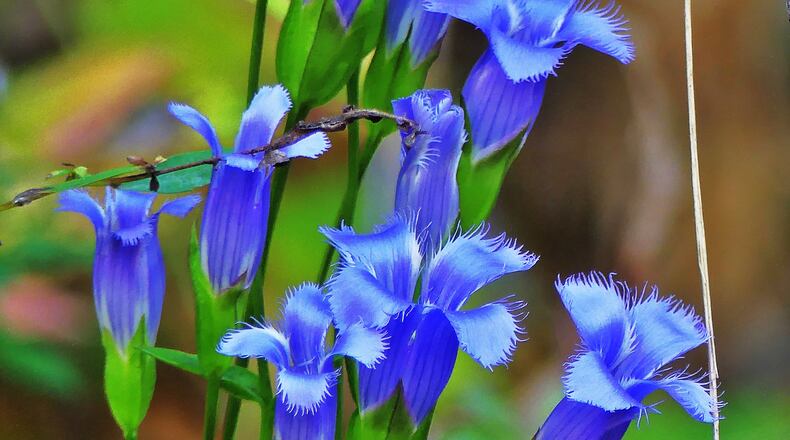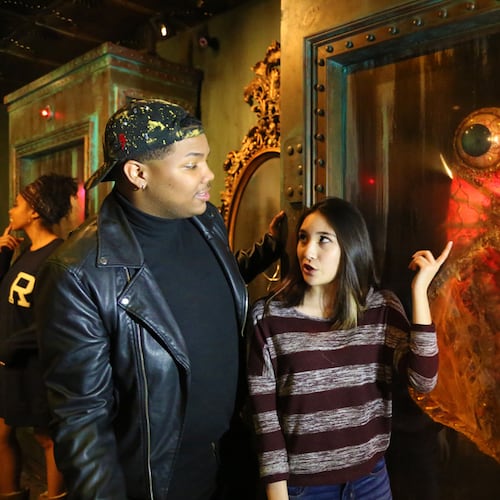It’s like nature saves the best for last. I’m talking about one of Georgia’s most stunningly beautiful — and rarest — wildflowers, the fringed gentian. Its breathtaking, iridescent blue flowers with delicate fringes appear only in fall, just when the season’s other wildflowers are starting to fade.
Flower lovers say that blooming fringe gentians mark the end of the annual wildflower season, which begins each year in late February with the flowering of spring ephemerals such as trout lilies and toothworts.
So lovely (and so rare) is the fringed gentian that it has inspired poems by Emily Dickinson and William Cullen Bryant, as well as an ode to its beauty by Henry Thoreau.
In his 1847 poem, “To the Fringed Gentian,” Bryant wrote: “Thou waitest late, and com’st alone / When woods are bare and birds are flown, / And frost and shortening days portend / The aged year is near his end.”
Due to the fringed gentian’s rarity and limited locations in Georgia, few folks probably ever see the flower. It lives only in a few moist meadows in Union and Towns counties in North Georgia’s mountains. The Georgia Department of Natural Resources classifies it as “critically endangered.”
And it’s getting even rarer due to development, indiscriminate mowing and herbicide use and difficulty in growing it in cultivation.
That was apparent last weekend when several of us Georgia Botanical Society members were on a field trip in North Georgia to see fall wildflowers. One of the places we had planned to visit was a grassy area adjacent to a rural road in Union County where we had always found scores of blooming fringed gentians in the past at this time of year.
But the day before our trip, we were told that there was no use going there because most, if not all, of the gentians had been wiped out by some “undetermined cause,” perhaps poor herbicide or mowing practices.
After the field trip, a few of us decided to visit the site anyway. At first, we could not find any fringed gentians. But then, we spied a couple of their rich blue flowers standing in some grass — enough to slightly raise our spirits.
IN THE SKY: From David Dundee, Tellus Science Museum astronomer: The moon will be new on Tuesday. Mars rises out of the east just after dark. Jupiter is high in the south at sunset. Saturn is in the southwest just after dark.
Charles Seabrook can be reached at charles.seabrook@yahoo.com.
About the Author
Keep Reading
The Latest
Featured



